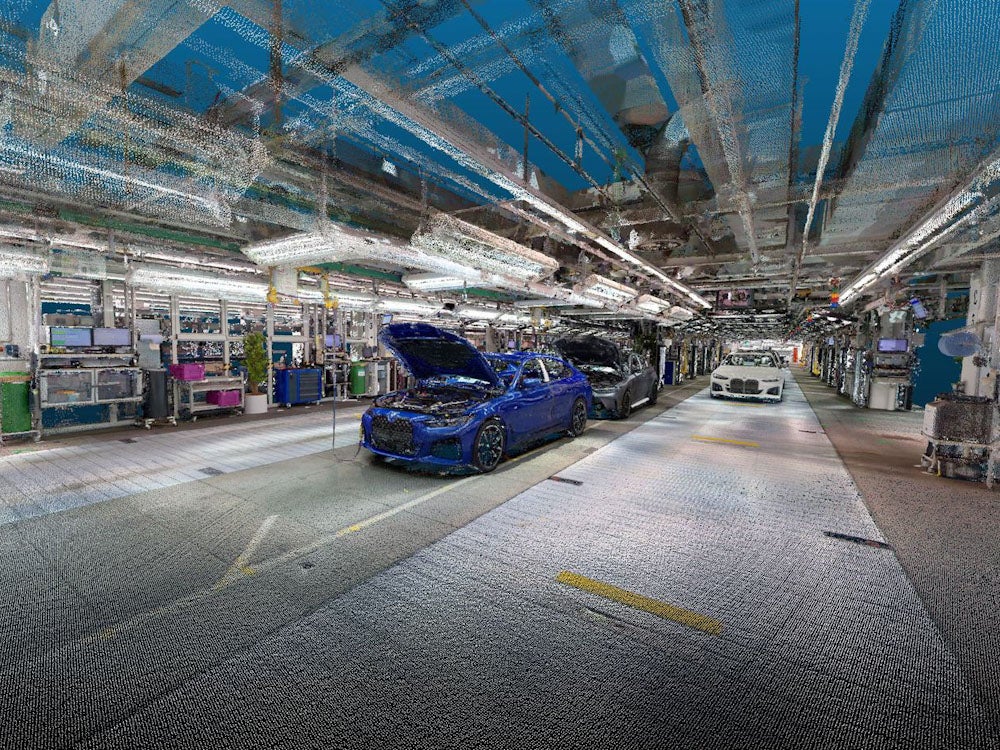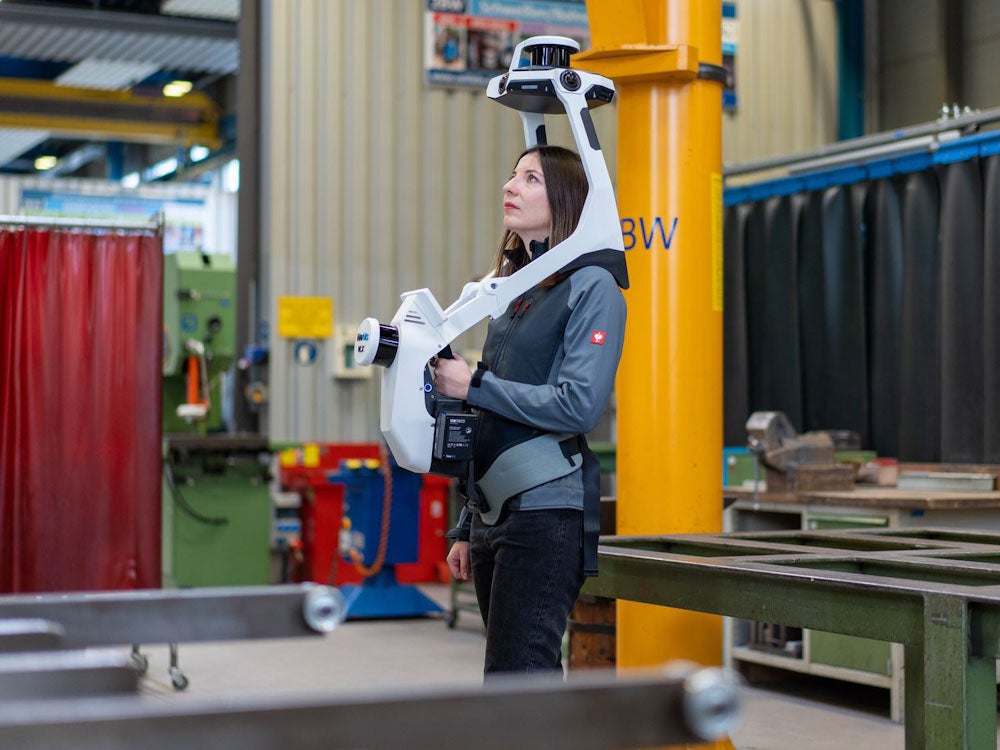
The automotive industry is under pressure from numerous directions to reduce its environmental impact, switching to the production of electric vehicles, and embracing digitalization – all while continuing to turn a profit. And the industrial metaverse could offer multiple opportunities to contribute to these goals.
The purpose of an industrial metaverse is to create a digital version of reality with extensive connectivity that enables unrivaled levels of collaboration between specialists, optimizing business and engineering processes to enhance what is possible in the real world.
When used in the planning stages of a construction or upgrade project, having access to comprehensive spatial datasets could deliver far greater precision in computer modeling to save substantial time, energy, and expense. In addition, many of the visits for inspection and planning at a physical site could be performed virtually and remotely, reducing the need for business travel.
However, for all the hype surrounding the metaverse, further developments are required on myriad fronts. Establishing the industrial metaverse will require multiple technologies all working in unison, rather than a dependence on a single platform or brand.
Progress is already underway in delivering immersive environments that can optimize productivity, with the building blocks being developed toward creating all-encompassing virtual environments. Essentially, the concept is an extension of existing digital twins and interconnectivity of the Internet of Things — only on a much vaster scale. While much of the technology currently exists to build the metaverse, it is often fragmented with a lack of cohesion between different platforms.
The need for interoperability in the industrial metaverse
With automotive businesses seeking to adapt existing production lines or build entirely new areas for battery manufacturing, redesigning a production facility in the virtual space offers many advantages. But plans must be based on real-world physics and accurate spatial data to ensure correct alignment between the virtual and physical spaces.
Yet the metaverse will require numerous platforms and solutions seamlessly interacting with each other, while also offering ease-of-use for those accessing it. With interoperability essential, it is vital to overcome challenges with different silos of data and software being kept separate from professionals working across different disciplines on the same project.
“You have different disciplines that work in their own silos, such as the architect, the facility manager, the construction manager, or the factory planner. To add more complexity, all of them work with different software,” explains Georg Schroth, CTO and Co-Founder of NavVis – a global leader in advanced technologies for reality capture and digital factories. “Then, the problem is that they often don’t know what the other parties are doing in parallel.”
To address this issue, tech company NVIDIA has launched its Omniverse platform built on Universal Scene Description (USD) technology originally pioneered by animation studio Pixar for production of its movies. USD enables teams from different disciplines to work from a synchronized 3D workflow, allowing everyone to keep track of what colleagues or partners are working on and see if any changes that have been made – similarly to edits being visible in a shared Google or Microsoft document. These capabilities are of considerable appeal in the automotive industry, with BMW recently announcing that it was using the NVIDIA platform.
“Many of our customers are implementing Omniverse as a large umbrella over all these various silos. And NavVis comes into play by providing detailed as-built data of their facilities,” adds Felix Reinshagen, CEO and Co-Founder of NavVis.
Having also partnered with BMW, NavVis is collaborating with NVIDIA Omniverse in streaming large-scale reality capture of data on automotive factories. NavVis VLX is a wearable mobile mapping device that not only captures extensive spatial data of a production facility within a matter of seconds using light detection and ranging (LIDAR) sensors but also takes 360° panoramic images in high definition to deliver a complete digital representation.
Captured images and spatial data can be uploaded and shared via the cloud, then made instantly accessible to those who need them. When combined with the NavVis IVION platform, users can then navigate the facilities virtually in a similar way to the functionality of Google Street View. Furthermore, NavVis describes itself as “software agnostic”, meaning that interoperability between platforms and software from different developers is encouraged for other processes such as computer-aided design, modeling, and simulation.

The importance of reality capture and rescanning
While it is possible to design fantastical virtual environments, the connection with the real world is pivotal to the success of any industrial metaverse. The greater detail of reality capture in working environments, the higher the credibility and opportunities for use cases among industry professionals.
With a need to create photorealistic and immersive environments, a combination of reality capture technologies such as those provided by NavVis and interoperative platforms such as the NVIDIA Omniverse could effectively become the foundation of any industrial metaverse within a very short space of time. A further dimension could be added when used alongside augmented or virtual reality technologies.
From the perspective of factory planning, such a digital platform enables lower changing costs in factory implementation, more efficient work from factory planners, and improved planning of digital alternatives before specifications are created for the real world.
“Planning obviously works best in a digital world where you can iterate faster. It gets rid of the need to implement physical tests, where oftentimes, you have to repeat the tests from scratch when there is a problem,” adds Schroth.
However, to optimize the technology, it will be crucial to keep digital factories up to date based on the latest data. While mobile mapping is a significant upgrade on 2D paper building plans, it is ultimately a snapshot that could quickly become out of date in fast-changing environments such as the automotive industry. Changes or additions to a production facility can impact spatial data and make a significant difference in planning further large-scale changes. This is where rescanning comes in.
“The technology synchronizes the physical and the digital world, thereby making the digital world valid and relevant,” explains Reinshagen. “Ensuring the digital and physical worlds are blended is an absolute requirement and a fundamental piece of the puzzle. To do this, you need not only scanning but also continuous scanning or rescanning to keep your data up to date.”
With NavVis VLX, rescanning can be performed quickly either by a human or an automated robot, with the data immediately accessible. “NavVis is solving the problem of keeping spatial data synchronized with the real physical reality,” adds Reinshagen. “Providing a digital version of the real world brings us much closer to the future reality of the metaverse.”
To learn more about how NavVis solutions are helping to shape the metaverse, download the specially commissioned white paper below.


